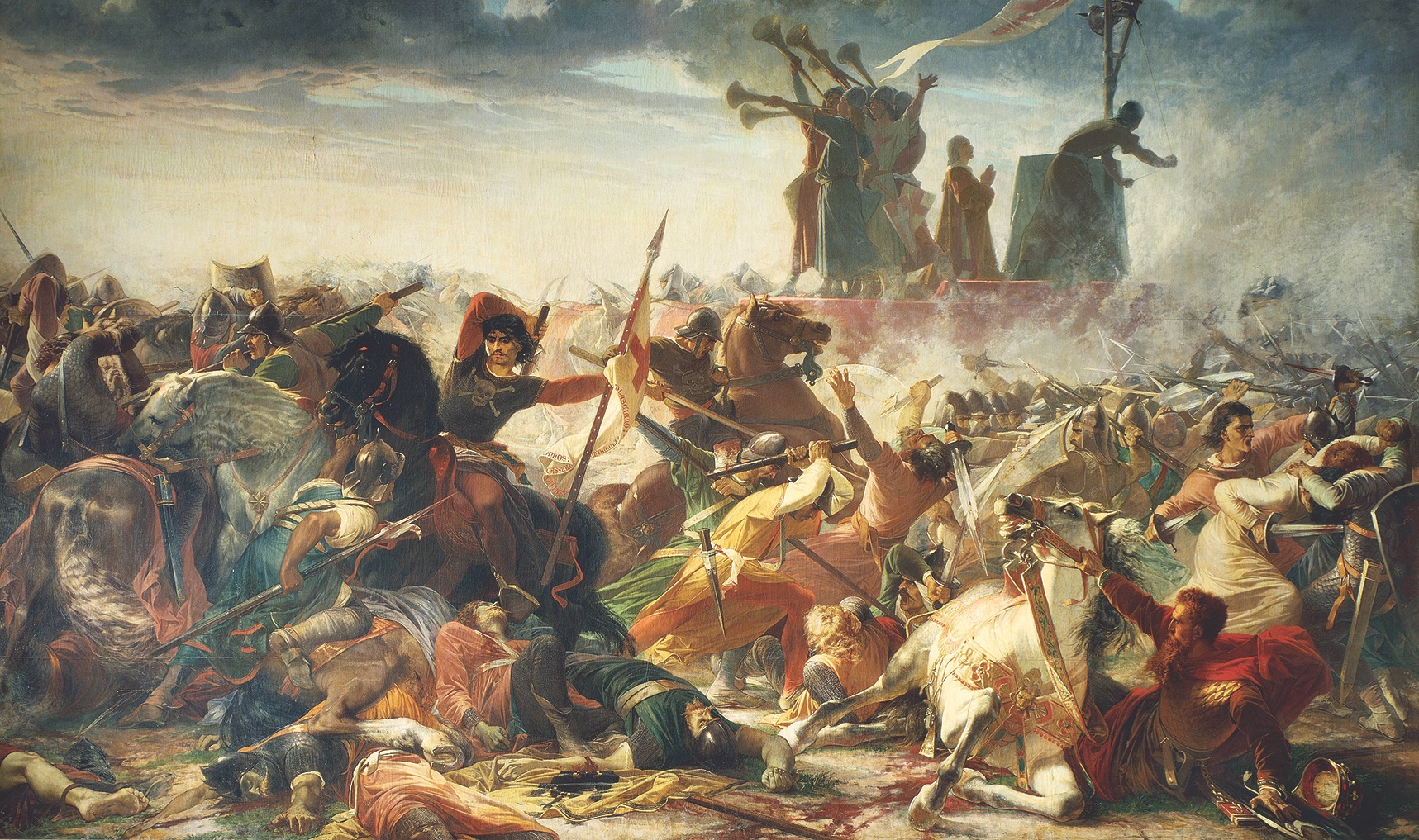For Holy Roman Emperor Frederick I the May 29, 1176, Battle of Legnano was a turning point—one that nearly cost him his life.
Frederick was the most powerful figure in 12th century Europe. Though his Germanic domain spanned central Europe from the Baltic Sea south to the Mediterranean, he aspired to regain the broader Roman empire Charlemagne had ruled in the 9th century. One step toward realizing that ambition was control of the Italian peninsula—an objective that brought his army of 8,000 knights across the Alps into Piedmont in 1174.
During four previous campaigns in Italy the emperor had demonstrated the well-rounded statesmanship that has earned him historians’ widespread regard. The city-states—ever prepared to turn on one another for advantage—had proven amenable to alliances with Frederick. It was they who later bestowed on him the epithet “Barbarossa” (Italian for “red beard”). In May 1167 Frederick had culminated his fourth campaign with a victory over the anti-imperialist Pope Alexander III and the Commune of Rome at Monte Porzio, southeast of the capital. After occupying Rome, however, the imperial army had been swept by sudden illness (possibly the plague), forcing Frederick and his men to flee the city. That December, with the support of the pope, the embattled northern city-states had formed the Lombard League for mutual defense against the Germanic incursions.
The fifth expedition began well in 1174, Frederick’s army taking the northwestern city-states of Susa and Asti. But his advance halted at Alessandria, a newly built Piedmont fortress defended by the Milanese, who successfully resisted a six-month siege. Flummoxed by his inability to take the city—and after failing to negotiate a truce—Frederick left his main force in Pavia and traveled north to meet reinforcements. He soon turned back at the head of 3,000 men, mostly heavy cavalry.
Getting wind of his plans, and unwilling to await reinforcements from all members of the league, the Milanese resolved to intercept Frederick with a 3,500-strong force. Waiting at Legnano, some 17 miles northwest of Milan, they rallied their army around a carroccio—a large mobile battle wagon. Surrounding it were successive ranks of 2,000 polearm-wielding infantrymen; rounding out the force were 1,500 knights.
Frederick scattered a 700-strong detachment of Lombard cavalry, then struck the main enemy force. Barbarossa’s mounted knights hacked their way through the outer Lombard ranks. But defending the carroccio itself was the “Company of Death,” a Milanese force of 300 infantrymen. The soldiers proved a hard nut to crack, and while Frederick obsessed over their defeat, the Lombard cavalry re-entered the fray, aided by reinforcements from Brescia.
In the melee that followed, the emperor’s bodyguards and standard bearer were slain, while the emperor himself was unhorsed. His disappearance panicked his troops, prompting a rout. Frederick’s wife, Beatrice I, was under the impression her husband had died until he showed up days later at Pavia. At the nadir of his rule, Frederick had no option but to enter into the Peace of Venice with the papacy and the Lombard League. In 1186 in Milan his son Henry VI married Constance of Sicily to cement the new alliance.
[hr]
Lessons:
Check your ambition. Frederick’s desire to match Charlemagne’s achievements was out of touch with the changed geopolitical realities.
In unity, strength. The fractious Italian city-states discovered a path to success that had eluded them. It would not last.
Pragmatism in defeat. Bribery helped foment division within the league, enabling Frederick to mitigate his settlement.

